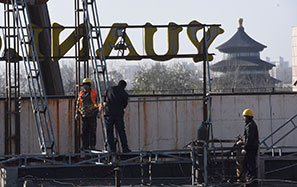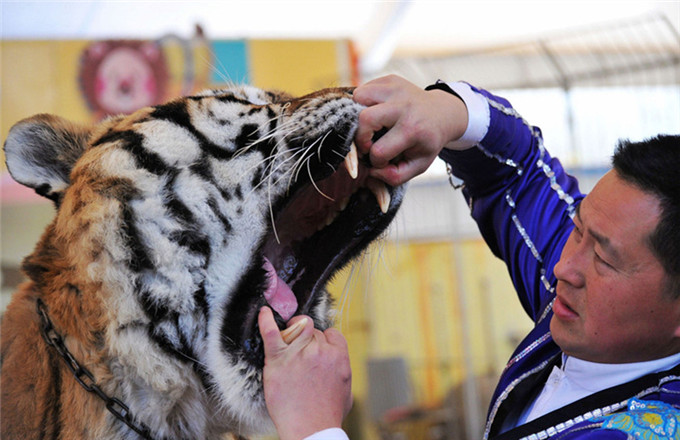Overseas investment rush garners pace
Chinese investment in africa has become diverse, taking in areas such as tourism and infrastructure
As foreseen by the architect of China's economic reform, Deng Xiaoping, since 1980 foreign direct investment in China has played a vital role in the development of the nation's economy. It has developed the country's export sector into a major global force, and brought higher technical and management standards and increased competition to China from more highly developed Western economies.
FDI inflows began with overseas Chinese investors building production facilities for export in the new southeastern special economic zones. These investments were aimed at exploiting the Chinese mainland's labor costs, which were very low at the time, to generate exports to Western markets, replacing facilities based in Taiwan and other higher-cost Asian locations.
These early investments by foreign companies in China were joined in the 1980s and early 1990s by investments aimed at China's own domestic market, made by major foreign companies accustomed to early-stage investment in high-potential emerging economies. These investors included the German auto company Volkswagen and the Western oil companies led by Exxon, Shell and British Petroleum, which saw huge downstream opportunities.
By 2000, China had become one of the world's largest recipients of foreign investment. The Western financial crisis of 2008 increased China's attractiveness as a destination for such investment. Attracted by China's continuing high growth rate, FDI into China rose to $116 billion (85 billion euros) in 2011 and $112 billion in 2012.
The opening-up of key sectors will stimulate further large inflows of FDI into China, which continues to control these sectors strictly. Media, telecommunications, electricity generation and distribution are still barred from foreign ownership, while foreign investors may only own non-controlling stakes in important financial services such as banking and insurance.
In the 1980s and 1990s, capital was a scarce resource in China, even for its large state-owned enterprises. But as China's exports started to boom in the late 1990s, growing trade inflows were added to inflows of capital from FDI. Foreign reserves swelled from $166 billion at the end of 2000 to $3.8 trillion early this year. The recycling of these growing foreign exchange reserves into overseas direct and portfolio investments and acquisitions became inevitable, particularly after the returns on China's huge stock of US dollar government-guaranteed debt fell after 2008, in yuan-denominated terms, to less than nothing.
In 2001, Chinese overseas M&A specialist Capital A established an index that measured the global integration of the Chinese economy, by dividing each year's stock of Chinese overseas investment into China's total GDP for that year, with a starting value of 1,000. In the years after 2001, the index fell below 1,000, as China's economy grew faster than the level of Chinese overseas investment. In 2006 the index exceeded 1,000 for the first time. It has grown steadily since, reaching 2,069 in 2010, 2,348 in 2012 and 2,483 in September 2013.
Using this rough measure, China is two and a half times more integrated today into the global economy than it was in 2001. In the process, China has become one of the world's largest investors, with $77.2 billion being invested overseas in 2012 and $73 billion in the first nine months last year.
Much of China's overseas investment has followed from the country's enormous demand for raw materials to fuel its manufacturing and infrastructure. Rich in natural resources, Africa has become a bigger target for Chinese investment than Asia, Latin America or Oceania, with $4.4 billion of Chinese investment in the first nine months of last year, compared with $3.3 billion for the corresponding period a year earlier, bringing the total stock of Chinese investment in Africa close to $24 billion.
Ten years ago, Chinese involvement in Africa focused on resource-rich countries such as Algeria, Angola, the Congo, Sudan, Zambia and Zimbabwe. But in recent years, Chinese interest has branched out to countries such as Tanzania and Ethiopia, which offer opportunities in manufacturing, tourism and port infrastructure.
Yet some do not like China's presence in Africa, saying it is extracting and shipping the continent's natural wealth back home, using Chinese workers, not Africans. Many of the manufacturing enterprises that use African raw materials are based in China, which benefits from the value-added from manufacturing, distribution and sales. But it cannot be denied that China's African investment, much of it in vital infrastructure such as telephone systems, bridges, ports and roads, and China's booming imports from Africa have given a new opportunity to a continent considered by many only a few years ago as a hopeless case.
Notwithstanding Africa's success in attracting interest from Chinese investors and businesspeople, Europe and North America are taking the largest part of China's foreign investment, which seeks technology and markets in addition to natural resources. Last year, CNOOC's acquisition of Canadian oil company Nexen for $15 billion and private company Shuanghui International's acquisition of pork producer Smithfield Foods for $7 billion dominated the M&A statistics. In 2012, privately owned Chinese real estate company Wanda acquired the largest US cinema chain AMC, while in Europe, the acquisition of food company Weetabix and minority investments in Thames Water and Heathrow Airport confirmed Britain as an important destination for Chinese investment.
As China's economy develops higher productivity and continues to integrate with the rest of the world, it is estimated that within three years, China's overseas investment could surpass the amount of foreign FDI in China, a development that will reinforce perceptions of China as the major global growth engine.
The author is a visiting professor at Guanghua School of Management, Peking University.


















